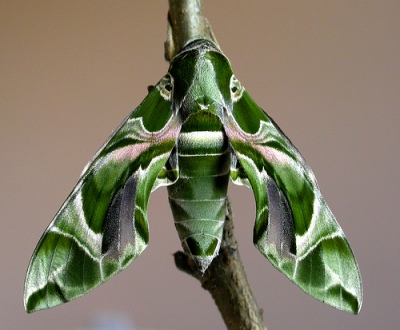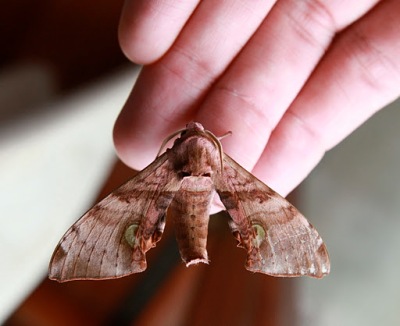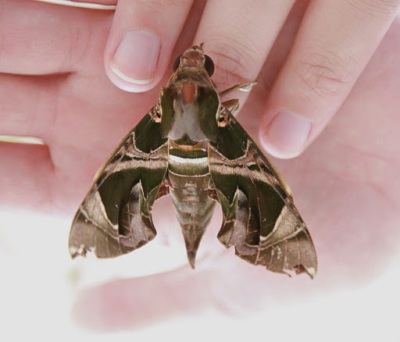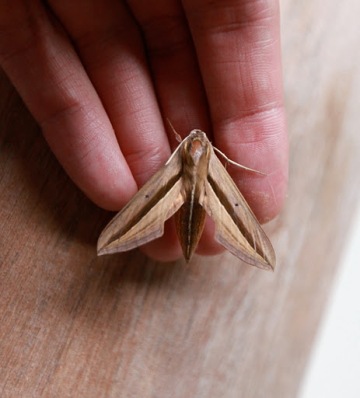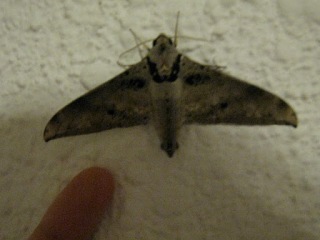(An Oleander Hawk Moth – Daphnis Nerii – image courtesy of Paul Nichol)
This post falls firmly within the ‘Etcetera’ category of ‘Turkey Etcetera’. You could say I’m expanding into other areas of interest, which include entomology, and in particular a family of moths, the Sphingidae, or hawk moths, which have fascinated me since I was a child. On a recent holiday to Malaysia I saw several different species, hence this post.
On the occasions when butterflies and moths are written about outside of an academic context, it is almost a cliché to mention Vladimir Nabokov. Nabokov was an accomplished lepidopterist. In his memoir, ‘Speak, Memory’, he describes the hawk moths as the ‘jets of my boyhood’. It’s a good metaphor not only for their characteristic swept-back forewings and streamlined bodies, but also for the appeal they hold for children inclined to obsess about and collect insects.
A typical example is the one pictured above, the Oleander Hawk Moth (Daphnis Nerii), a large species occurring through southern Europe, Turkey, the Middle East, Africa, India, and Southeast Asia. Many of the hawk moth species are varying shades of grey or brown, but Daphnis Nerii, with its green marbled wings and unlikely streaks of pink, is often considered one of the most beautiful of all moths.
The Sphingidae are the fastest-flying insects after dragonflies, and can travel at over 33 miles per hour. In contrast to the meandering flight of most Lepidoptera, they are almost bat-like in the air.
But the moth that sparked my own interest could not have looked less like a fighter jet. It was the Poplar Hawk Moth (Laothoe Populi), one of the most common species found in the UK, but which has a very unusual appearance, holding its underwings ahead of its forewings when at rest, with its abdomen curved sharply upwards. When I found one sitting in an empty bathtub at my home when I was nine or ten, it looked as improbable as an old biplane.
The only hawk moth to have forced its way into the popular consciousness is the Death’s Head Hawk Moth (Acherontia Atropos): large, mainly dark brown, with a yellow and blue streaked abdomen, and a pattern resembling a skull on its thorax. Long considered an ill omen in European countries (for obvious reasons), the moth has some odd characteristics. It emits a high-pitched squeak when alarmed, and often raids bees’ nests to steal honey. This was the moth bred by Buffalo Bill, the serial killer in Silence of the Lambs, and shown (with some minor photoshopping) on the posters for the movie.
So anyway, here are the hawk moths I found in Malaysia:
Despite its distinctive green eyespots on the forewings, it took me a lot of trawling online to identify this one as Daphnusa Ocellaris, quite common and apparently something of a pest in Southeast Asia, where the larvae feed on durians, a type of fruit plant.
When I saw this moth, I thought it might be a melanistic form of the Oleander Hawk Moth, pictured at the top of the post. But after doing some research, I discovered it was a similar though less spectacular species, the Jade Hawk Moth, Daphnis Hypothous, which is more typical to Southeast Asia. It is surprising how often there is some subtle but unambiguous mark that distinguishes similar-looking species from one another. Here, it is the white spot at the tip of each forewing on D. Hypothous, which D. Nerii lacks.
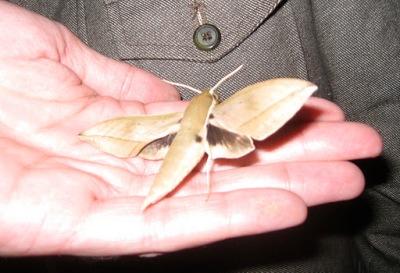 This one, photographed mid-wingbeat, is Theretra Clotho. Its abdomen, thorax and forewings are a pretty uniform olive brown colour, which makes it fortunate that I got this picture, revealing its distinctive dark underwings and black spot at the base of the abdomen.
This one, photographed mid-wingbeat, is Theretra Clotho. Its abdomen, thorax and forewings are a pretty uniform olive brown colour, which makes it fortunate that I got this picture, revealing its distinctive dark underwings and black spot at the base of the abdomen.
And how did I find these moths? By intrepidly hunting the corridors of my hotel, which were open-air and lit during nighttime. It was, as you can imagine, a thrilling holiday, especially for my girlfriend.
(05/06/12. Please note, the first picture is not mine. I nicked it off the Internet, and now can’t find the source. I would credit it if I could.)

